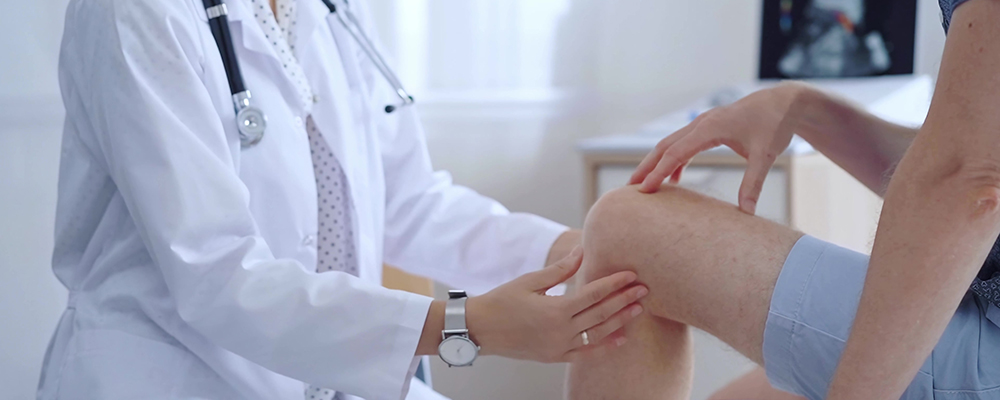Top 5 Facts About Orthopedics Every Patient Must Know
Posted On: October 15, 2025 by Robert Matijevich

Back and neck pain plague many people. We often live under stress, sit at the computer poorly, and neglect exercise and simple walks. No wonder we sometimes feel muscle stiffness, neck, shoulder, and lower back tension, and pain. Fortunately, orthopedic treatment helps heal the musculoskeletal system and restore the joy of movement. However, a conscious and individualized approach is essential for achieving the best results. Let us discuss the most important facts about orthopedics.
Why Orthopedics Is So Important for Bone and Joint Health
Orthopedists diagnose, treat, rehabilitate, and prevent musculoskeletal system diseases and injuries. This complex system includes bones, joints, ligaments, tendons, muscles, and nerves that provide movement, strength, and stability to the body. Initially, orthopedics primarily treated children with spinal and limb deformities. However, today it includes patients of all ages.
Orthopedists treat bone and joint diseases—conditions in which bones lose strength, become brittle, and are prone to fracture.
The most common bone diseases include arthritis and osteoporosis. Osteoporotic fractures most often occur in the wrist, spine, and hip. A strong skeleton is essential for movement and also for protecting internal organs—the heart, lungs, and brain. Bone and joint problems directly impact a person’s quality of life, mobility, and emotional well-being. Therefore, if you notice any discomfort, be sure to consult a doctor.
Symptoms to Look Out For
The following signs may indicate a bone or joint disorder:
- Joint stiffness and pain
- Decreased mobility and function of the joints
- Joint swelling and deformity
- Morning stiffness, especially with rheumatoid arthritis
- Bone pain during exercise or at rest
- Height loss, stooped posture, spinal curvature
- Unexplained back pain
- Leg length discrepancy or shoulder asymmetry
If you notice these symptoms, be sure to consult an orthopedist. A specialist can determine the cause and begin treatment.
Top 5 Interesting Facts about Orthopedics
How much do you know about this amazing science? We’re sure some of what we’re about to write was a mystery to you.
1. Orthopedics Has Ancient Roots
Modern orthopedics relies on advanced imaging techniques and minimally invasive procedures. But its excellent history dates back thousands of years. Even ancient civilizations used splints and primitive instruments to fix fractures. This helped speed healing. The ancient Egyptians used bamboo, straw, and cloth to immobilize fractures, and tribes in South Australia used clay to stabilize broken limbs. The Shoshone Indians (700–2000 BC) made splints from wet animal hides. The Greeks studied skeletal injuries and described spinal disorders. Even then, they knew about scoliosis and were searching for treatment methods.
By the 18th century, orthopedics had become an independent medical discipline. It initially focused on correcting deformities in children. In the 19th century, doctors began refining bone setting and fracture treatment methods in military hospitals. Today, orthopedics combines advanced surgical techniques with non-invasive treatments. This comprehensive approach ensures the fastest possible recovery for patients.
2. Alternative: Surgery
Back pain can be excruciating, and almost everyone is familiar with it. The prevalence of low back pain in the working-age group has risen to 452.8 million cases globally, a 52.66% increase since 1990. People strive to relieve tension and discomfort. But sometimes they are afraid to consult an orthopedist, thinking they will recommend surgery. But we hasten to dispel common fears.
In fact, most specialists strive to use the most gentle approach possible. Before resorting to radical treatment, a specialist will recommend:
- Physical therapy and rehabilitation
- Epidural steroid injections
- Chiropractic care
- Mobility aids and home exercises
However, sometimes surgery is entirely justified. If a patient has a complete ligament or tendon tear, vertebral fractures, or severe nerve compression, more radical treatments will likely be necessary. In this case, the doctor will likely prescribe joint replacement, arthroscopy, osteotomy, fusion, internal fixation, or soft tissue reconstruction.
Joint replacement surgery involves replacing damaged joint surfaces with artificial implants. Arthroscopy is a minimally invasive procedure that allows the doctor to examine and treat the joint through a mini-incision. Physical therapy and exercise therapy are aimed at restoring mobility and strength. Medication and injection therapy are used to relieve inflammation and reduce pain. Arthroscopy procedures are performed outpatient under general anesthesia, and patients can return home within a few hours.
3. Orthopedic Specialization
After residency, orthopedic surgeons can specialize in general orthopedics or undergo advanced training in various specialties. They can choose from sports medicine, pediatric orthopedics, endocrinology, oncology, spine surgery, foot and ankle surgery, and hand surgery.
Each specialization focuses on specific conditions or patient needs, but all orthopedic surgeons share a common goal: restoring mobility and quality of life.
4. Orthopedic Care Helps Manage Pain and Improve Mobility
Pain relief is one of the main reasons patients seek the help of orthopedists. These specialists treat various conditions affecting the back, neck, shoulders, knees, hips, and wrists. Using physical therapy, manual adjustments, and specialized exercises, orthopedists help patients regain mobility and perform everyday tasks with less discomfort. Orthopedists help athletes improve performance, prevent injuries, and speed up recovery after physical activity.
5. Orthopedists Undergo Extensive Training
Becoming an orthopedic surgeon requires years of dedicated work and training, typically requiring around 14 years of post-high school education. After graduating from medical school, doctors complete a five-year residency and often receive a fellowship in a specific specialty. This comprehensive training ensures the physician’s high level of expertise, education, and ability to help patients restore their health. An orthopedist needs to be knowledgeable in all aspects of musculoskeletal health. Their extensive experience is also crucial. If you’re wondering which doctor to choose, read patient reviews and choose a clinic and doctor you can trust. Going for a consultation and asking all your questions is also a good idea.
After all, you’re entrusting your most precious health asset to an orthopedist. Make informed choices! Our clinic employs qualified specialists, we practice a personalized approach, and we are always ready to listen to you and find the best treatment.
Conclusion
Believe us, you can return to an active and productive life; you can get rid of pain. But you need to act quickly. Our specialists are waiting to hear from you. Our dedicated team combines professional experience with genuine compassion for each patient. We will carefully assess your situation and tailor orthopedic care specifically for you. Are you recovering from an accident, surgery, or chronic illness? We will help you move, feel, and return to the activities you love. Contact us for help!

